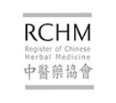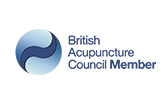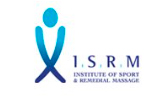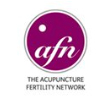Theory of Acupuncture
The concept that the body is animated by energy is an old and persistent one. In Chinese medical theory the concept is that this energy (Qi) circulates around the body along specific channels which have relationships and connections to the organs they share their names with.
The Chinese word Qi also means, air and breath, thus intimately associated with life, like the concept of prana in yoga and ayurvedic theory. Qi can be understood as a description of physiological processes or function, as a dynamic. In many ways it makes more sense to think about it like this than simply as a substance.
Yin and Yang

The concept of yin and yang is often misunderstood and poorly translated. It is summed up in the symbol of the Taiji, translated as “supreme ultimate” or ““great polarity”” it represents all things, and is the same word as Tai Chi as in Tai Chi Chuan, the martial art and health promoting exercise. Each property is interrelated, they are interdependent, mutually consuming and in opposition. Each contains a little of the other, the potential of their opposite, existing in a state of dynamic equilibrium.
Something can only be considered either yin or yang in relation to something else. For example ice would be yin to water as it is less active, solid, cold, but water would be yin comparred with steam which is more ‘active’, hot, fast moving and dynamic and therefore yang.
The Zang Fu organs
The organs, are divided into 2 groups. The Zang are the yin organs and the fu are yang organs. Each Zang has a Paired Fu which it is connected to by the channels, and each organ also has a paired organ of the same type forming what is called the six divisions
The denser organs are yin and are seen to be nourishing and generating, the organs which are seen to process energy from our environment, food and air, whereas the yang organs have things pass through them, they do the processing (i.e. more active). Each organ is also associated with other levels of the body physiologically and energetically.
The Five Phases
Sometimes translated as five elements, wuxing is more correctly translated as five phases because they are like yin and yang, dynamic and interacting relationships. The character xing signifies movement and change. The reason it was translated as element is becuase of a jesuit missionary in China in the 17th century who saw a similarity with the ancient Greek idea of four elements. Each organ has a five phase correspondence and a relationship with each other organ according to two cycles, the generating (sheng) and controlling (ke) cycles.
These associations bring in another level of organ correspondences and another way of approaching diagnosis and treatment and are quite key to the understanding of pathological mechanisms according to Traditional Chinese Medicine.






